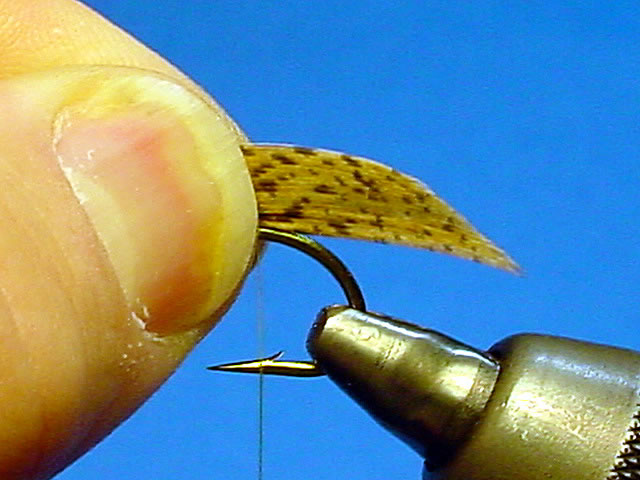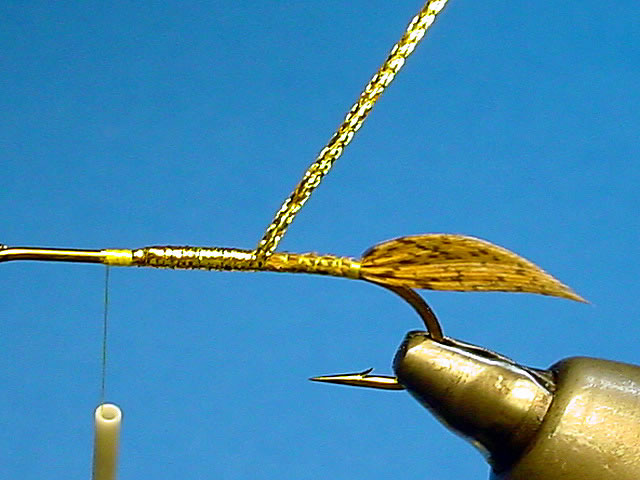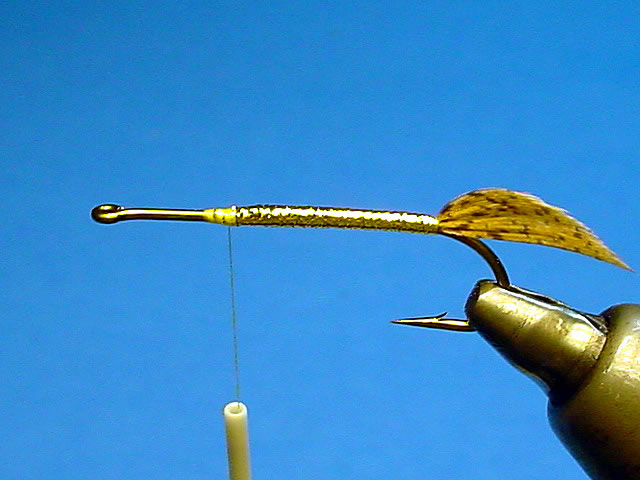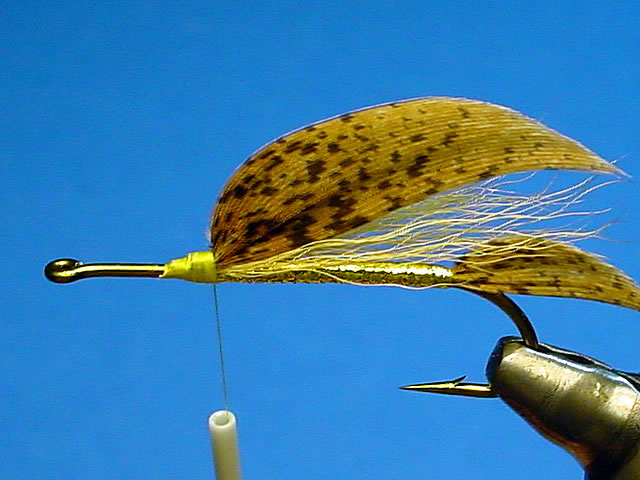The Muddler Minnow is another one of those flies that hardly anyone knows how to tie well. It is rather complicated and entails a few tricks in the tying process to really get it to come out right. I hope to show you how to master the quill wings and the spun deer hair head as well as the proper proportions. The Muddler is a very versatile fly that can be fished dry, wet or as a streamer. Most commonly it is used as a baitfish or sculpin imitation. I like to use the Muddler as a lightweight dropper in a two-streamer setup. The dense deer hair head pushes water and creates vibrations that attract fish even in off-color water. Generally, I tie it unweighted but have been known to add lead wire to the body or even a cone head. The Muddler is an old fly that seems to have fallen out of favor with most modern fly fishers but it is a great baitfish imitation and is worthy of a spot in your fly box.
Materials Needed:
Hook: TMC 9395 #2-10
Thread: 6/0 for body and wing, 3/0 for hair head
Tail: Matched Slips of Mottled Turkey Quill
Body: Gold Mini Flat Braid
Underwing: Tan Calf Tail
Overwing: Matched Slips of Mottled Turkey Quill
Collar: Natural Deer Hair Tips
Head: Spun and trimmed natural deer body
Step 1
Begin by forming a (6/0) thread base from the seventy-five percent point to the bend. The front quarter of the shank will be reserved for the spun deer hair head and collar so keep it clear of any materials during the tail/body/wing process.

Step 2
Cut two matching (one from each wing) turkey quill slips from the quills that are equal in length and width. Take care to select matching portions of the quill and be sure they have nicely formed tips.

Step 3
Place the two slips inside to inside with the tips exactly even and position them above the thread at the bend of the hook. The length of the slips should be about one-fourth of the shank length long. Grasp the tips in your left hand to measure them then transfer them to the right hand.

Step 4
Make one loose turn of thread over the top of the feathers and execute a pinch wrap over the base of the feathers compressing the fibers on top of one another. Try to keep the feathers centered on top of the shank and let the sides buckle to form the wrinkle along the sides. Make several more tight turns of thread to secure the quills.

Step 5
Continue forward with the thread over the remaining butt ends and clip the excess at the seventy-percent point.

Step 6
Tie in an eight-inch length of mini flat braid in at the front of the shank (75% point) and wrap over it for a distance of about three eye lengths.

Step 7
Wrap the braid back to the bend in smooth concentric wraps …

Step 8
…then come forward again making a double layer body.

Step 9
Tie off the braid at the seventy-five percent point and clip the excess.

Step 10
Measure a sparse clump of tan calf tail hair so it is even with the middle of the tail. I like calf tail rather than the traditional squirrel because of the extra body it affords.

Step 11
Tie in the calf tail without moving forward into the reserved front quarter of the shank. Clip the butts and form a smooth thread base over the stub ends.

Step 12
Cut, match and measure another set of quill slips. The wing quills should extend to just short of the tip of the tail quills and the curves should match up exactly.

Step 13
Tie the wing quills in with the same method used for the tail quills. Again, be sure to keep the wings centered on the hook shank and take notice of the arc in the wing

Step 14
Clip the butt ends and form a smooth thread base over the stub ends. Whip finish the 6/0 thread and clip.

Step 15
Start the 3/0 thread at the eye of the hook and form a thread base back to the base of the wing, but not up onto it.

Step 16
Cut, clean and stack a substantial clump of natural deer body hair. Cut the butt ends so that the tips for the collar make up about two-thirds of the length of the hair and the butts, which are to become part of the head, make up the other third. Place the hair over the thread at the base of the wings with the tips extending to the midpoint of the turkey quill wing.

Step 17
Make three loose turns of thread over the hair. The first turn should have just enough tension to gather the hair and…

Step 18
…the second and third turns will start to flare the hair but not start to spin it.

Step 19
Pull down and slightly back on the thread to spin the hair completely around the hook.

Step 20
Spiral wrap the thread forward through the butt ends of the hair with a fair amount of tension. This will flare the butt ends and stand them up along the shank.

Step 21
Pull the butt ends of the hair back and work the thread completely forward through them to the very front edge of the hair.

Step 22
Clip another clump of hair from the hide and clean all the underfur from it. Cut the tip ends off the hair and place the center of the clump directly over the thread. This will make the back end of the hair overlap the first bunch as shown in the photo.

Step 23
Make three more turns of thread over this clump as you did on the first and spin this bunch as well.

Step 24
Work the thread forward through the butt ends to just behind the hook eye and whip finish. Clip the thread.

Step 25
I like to use a double edge razor blade to trim the head into a cone shape. Try to keep the head symmetrical and be careful not to trim off too much of the tips of the collar. It may be helpful to switch back to scissors for the trimming around the front of the collar.

Step 26
Finished fly. Notice the matching curve of the wing and tail, the length of the deer hair collar and the symmetrical head.

